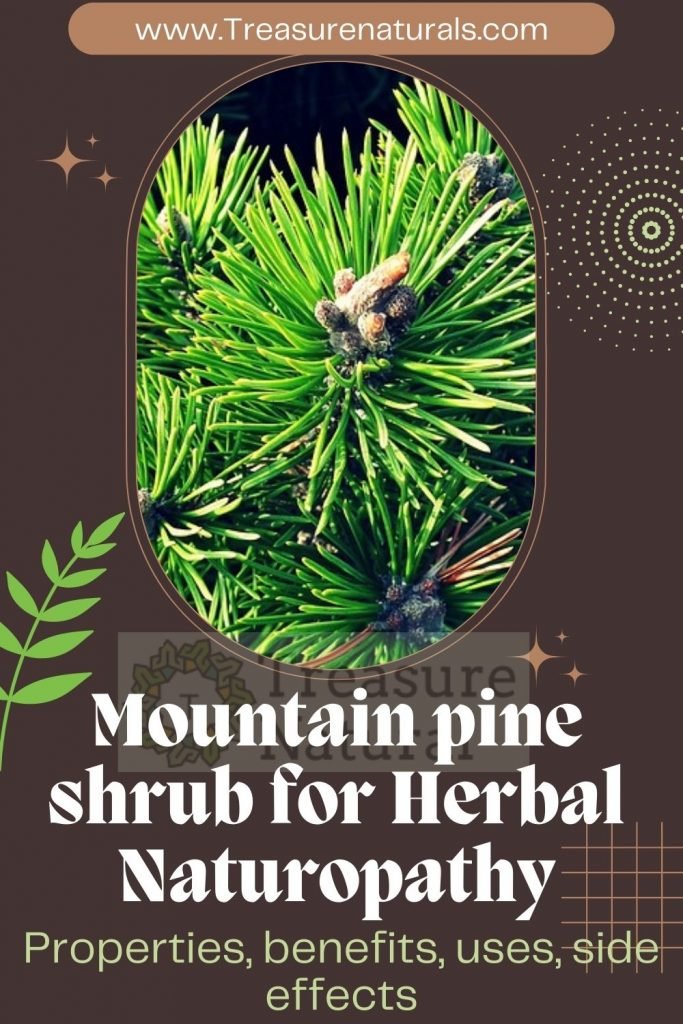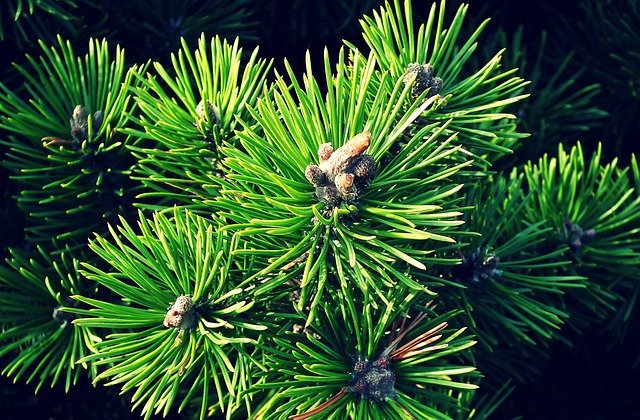
Mountain pine is an evergreen shrub that grows at high altitudes. The essence present in the plant has expectorant, balsamic and antiseptic action and is used in case of cough, sore throat and cold.
Description of the plant
Mountain pine is a bushy shrub that can reach three to five meters in height. It has an erect main stem and branches generally prostrate; the bark is gray-brown, and as the plant grows, it becomes scaly.
The leaves of the mountain pine are needle-like and gathered in bundles of two, more rarely three. The male flowers are oblong and yellow, while the female ones are conical and purplish.
The drug of mountain pine consists of the apical buds, about three centimeters long and collected in groups of three to five conical buds gathered around a larger central bud.
Properties and benefits of mountain pine
The properties of mountain pine are given by the essence contained and extracted in a stream of steam from the leaves and tops of the branches.
Mountain pine essential oil is composed of monoterpene hydrocarbons and has antiseptic and secretolytic properties.
The essence of mountain pine is indicated for internal and external use in case of bronchial phlegm and for external use in case of rheumatism.
For internal use, the essential oil is taken by adding a drop to a sugar cube or a teaspoon of honey, while externally it can be added to vegetable oil for massages (one or two drops of essence per tablespoon of oil).
Mountain pine essential oil can also be used to make suffumigi with hot water, in case of cough, cold and phlegm.
The use of mountain pine essential oil is contraindicated in case of bronchial asthma and whooping cough.
For the same indications, mountain pine buds that contain a resin and essential oil are also used.
Mountain pine buds are used to prepare herbal teas, syrups and tinctures to be taken in case of cough with phlegm for their balsamic and expectorant properties.
The intake of products obtained from mountain pine buds does not seem to have contraindications or side effects.
Use of mountain pine

Pine is used, harvested when they are still immature and green, generally around June or July.
The young pine cones of mountain pine are used to prepare the grappa with mountain pine and the syrup with mountain pine, or they are added inside the honey that over time will extract its essence.
The mountain pine grappa or mountain pine liqueur is prepared with six pine cones of mountain pine, 1 l of dry grappa and 20 g of sugar: after dissolving the sugar in the grappa, the pine cones are placed in a well-cleaned glass jar and covered with sweetened grappa.
Let the grappa macerate for about six weeks in the sun, shaking the jar at least twice a day, after which it is filtered and bottled.
The mountain pine syrup is prepared instead by filling a glass jar with mountain pine cones, then completely covering them with sugar.
The jar should be left in the sun until the end of summer, after which the syrup is filtered: thanks to the heat, the sugar will melt and extract the essence of mountain pine, at the end of summer.
Thanks to the balsamic action, mountain pine syrup is useful in case of cough, sore throat and cold.
Mountain pine syrup can also be used to prepare balsamic candies against sore throat: simply heat the filtered syrup on the fire and cook it over low heat until it has thickened.
Then drop the syrup in drops on a sheet of parchment paper, to obtain many small candies. When the syrup has cooled, the candies are peeled off, which must be stored in airtight jars to ensure that they do not lose their essence.






